First and foremost a plantsman, I have always been lured by rarity, charmed by botanical minutiae and enthralled by novelty. As I turned my attention to art and design, I learned to look at and think of plants in broader terms — size and silhouette, opacity, durability and so on — qualities that make a plant pop, or not. When you're conceptualizing a new landscape, bolder, structural plants are the first ones to bid on. Let's have a look at five telling examples.

CYAN Horticulture
It is in the famed lake gardens of Northern Italy that I fully realized the crucial importance of structure by plants. Sometimes to extremes, traditional Italian gardens rely on hedges and topiaries of all sorts to impart rigidity and express symmetry. Despite this grand example, yes, this approach can easily be adapted to the smallest lot.
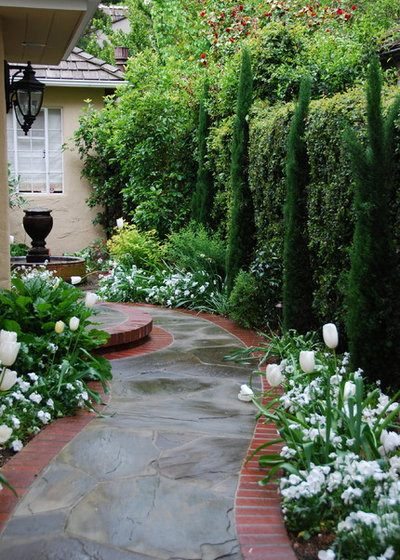
Verdance Landscape Design
Dwarf Italian Cypress (
Cupressus sempervirens 'Tiny Tower')
Presented with a small space — an urban courtyard or a roof patio — I always devote considerable attention to structural plants. With solid bones, such a small space will come to life and endure. In this charming example, pencil-shaped dwarf Italian cypresses (
Cupressus sempervirens 'Tiny Tower') lead the way.
USDA zones: 7 to 10 (find your zone)
Water requirement: Well-drained soil
Light requirement: Full sun
Mature size: 30 feet tall and 3 feet wide
Seasonal interest: Year-round
When to plant: Anytime
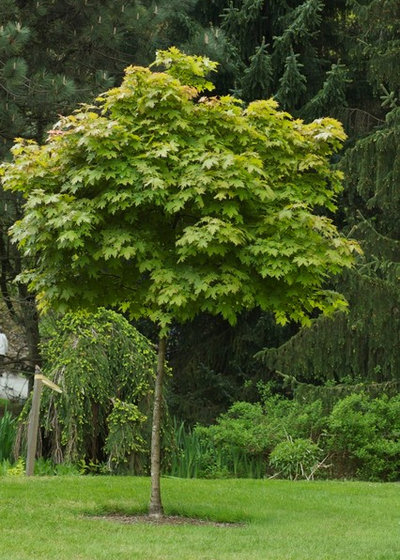
CYAN Horticulture
Globosum Norway Maple (
Acer platanoides 'Globosum')
This globular maple (
Acer platanoides 'Globosum'), while resembling more a giant lollipop than any Canadian icon, is perfect for smaller spaces. Isolated on a lawn, lined up along a tight driveway or dotted throughout a parterre, it will unmistakably satisfy.
USDA zones: 4 to 8
Water requirement: Well-drained to moist soil
Light requirement: Full sun
Mature size: 16 feet tall and 13 feet wide
Seasonal interest: Spring to fall
When to plant: Anytime
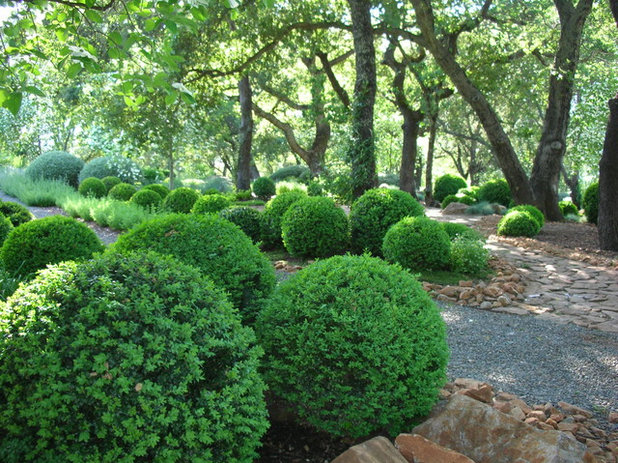
Blasen Landscape Architecture
Boxwood(
Buxus spp and cvs)
Far from bland, fancy maples and skinny cypresses are nonetheless outshone by the king of them all, the boxwood (
Buxus spp and cvs). Its naturally dense and rounded growth habit, as well as the small, leathery and dark green leaves, make the boxwood a tremendous choice for structure. Especially hardy and reliably trouble free, boxwoods of all sorts are shaped into balls and tiered topiaries, spirals and even animal shapes.
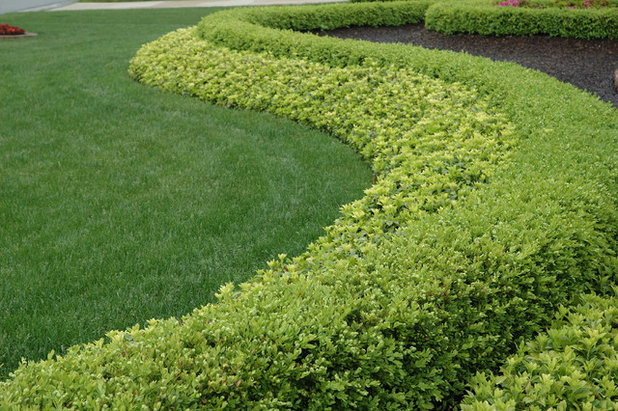
Land Architects, Inc.
Boxwood is also the de facto shrub for complex parterres, acrobatic knot gardens and border trims. It takes to incessant clipping like no other. As such, it is one of the most useful live building blocks available to designers.
USDA zones: 5 or 6 to 8
Water requirement: Moist soil
Light requirement: Full sun to dappled shade
Mature size: Very variable
Seasonal interest: Year-round
When to plant: Anytime
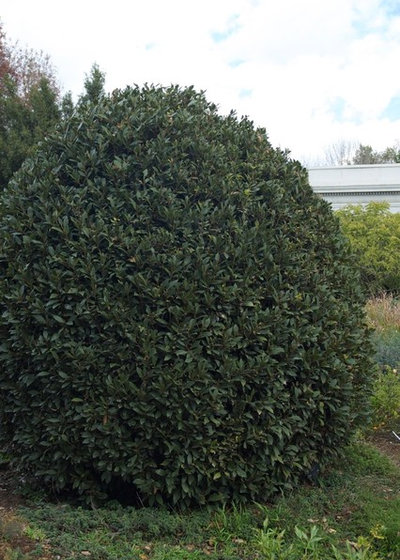
CYAN Horticulture
Bay Laurel(Laurus nobilis)In the mild climes of the U.S. West Coast or in large tubs to be wheeled indoors when winter comes elsewhere, bay laurel (
Laurus nobilis) lends itself to pruning particularly well. With its thick, aromatic, dark green foliage, bay laurel is an unparalleled backdrop for flowery compositions. Ovoid to pyramidal, the shapes it can be forced into are a most useful structural tool.
USDA zones: 8 to 10
Water requirement: Well-drained to dry soil
Light requirement: Full sun
Mature size: Very variable
Seasonal interest: Year-round
When to plant: Anytime
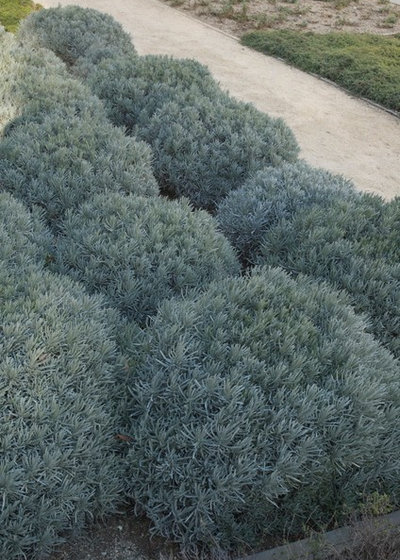
CYAN Horticulture
English Lavender(Lavandula angustifolia)As hardy as boxwood, and almost as popular, is English lavender (
Lavandula angustifolia). Of smaller stature, with oil-rich needle-like leaves, lavender thrives in sun-drenched, dryer soils. Once it has bloomed, each lavender plant must be severely clipped into a low mound. Set in geometric patterns or lined up along pathways, this lavender can't be beat for neatness and impact.
USDA zones: 4 to 10
Water requirement: Well-drained to dry soil
Light requirement: Full sun
Mature size: 1½ feet tall and 2½ feet wide
Seasonal interest: Year-round
When to plant: Anytime





